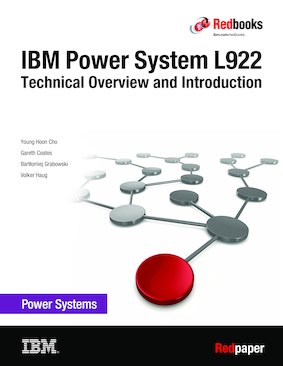Abstract
This IBM® Redpaper™ publication is a comprehensive guide covering the IBM Power System L922 (9008-22L) server, which was designed for data-intensive workloads such as databases and analytics in the Linux operating system. The objective of this paper is to introduce the major innovative Power L922 offering and its relevant functions:
- The new IBM POWER9™ processor, available at frequencies of 2.7 - 3.8 GHz, 2.9 - 3.8 GHz, and 3.4 - 3.9 GHz.
- Significantly strengthened cores and larger caches.
- Two integrated memory controllers that allow double the memory footprint of IBM POWER8® processor-based servers.
- An integrated I/O subsystem and hot-pluggable Peripheral Component Interconnect Express (PCIe) Gen4 and Gen3 I/O slots.
- I/O drawer expansion options offer greater flexibility.
- Support for Coherent Accelerator Processor Interface (CAPI) 2.0.
- New feature IBM EnergyScale™ technology provides new variable processor frequency modes that provide a significant performance boost beyond the static nominal frequency.
This publication is for professionals who want to acquire a better understanding of IBM Power Systems™ products. The intended audience includes the following roles:
- Clients
- Sales and marketing professionals
- Technical support professionals
- IBM Business Partners
- Independent software vendors (ISVs)
This paper expands the current set of IBM Power Systems documentation by providing a desktop reference that offers a detailed technical description of the Power L922 system.
This paper does not replace the current marketing materials and configuration tools. It is intended as an extra source of information that, together with existing sources, can be used to enhance your knowledge of IBM server solutions.
Table of Contents
Chapter 1. General description
Chapter 2. Architecture and technical overview
Chapter 3. Virtualization
